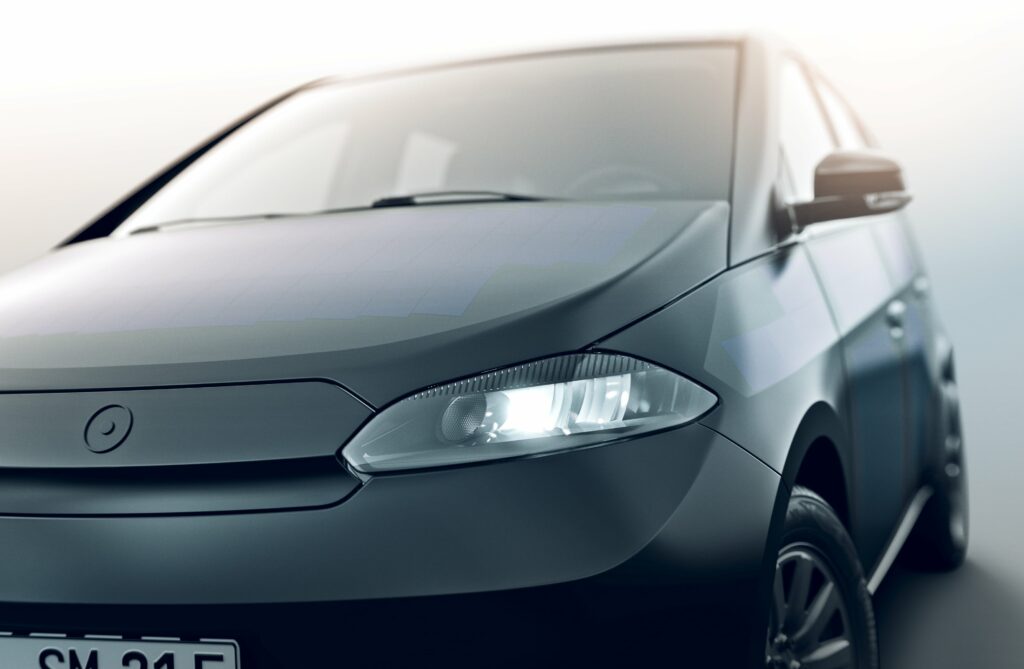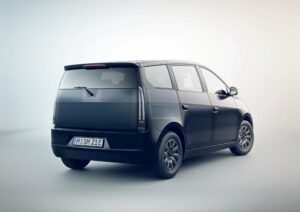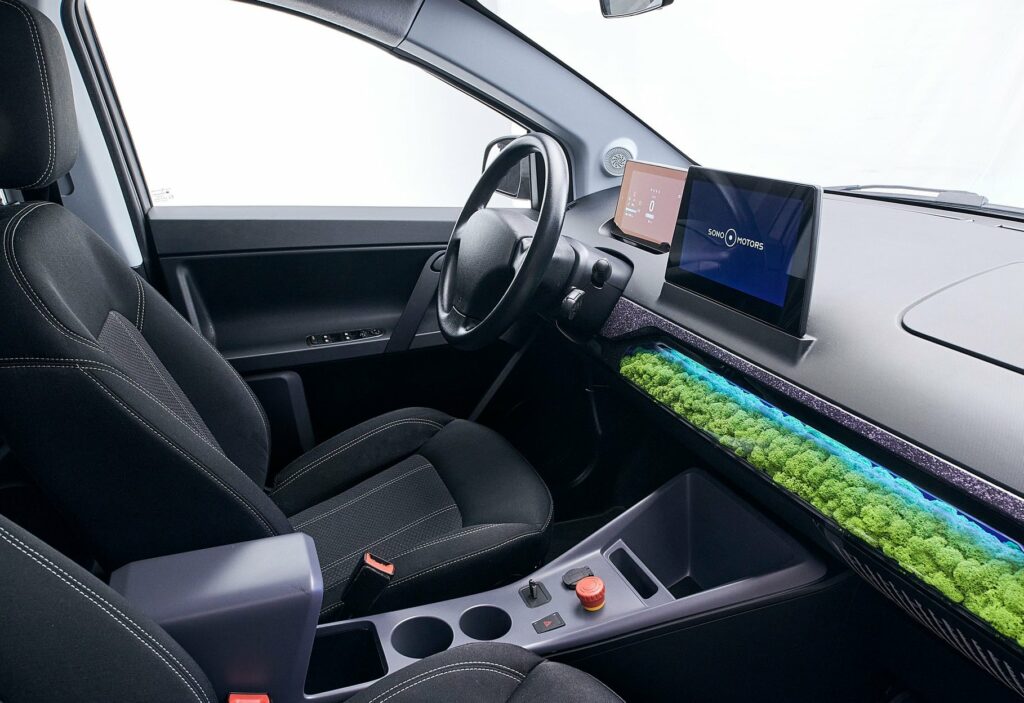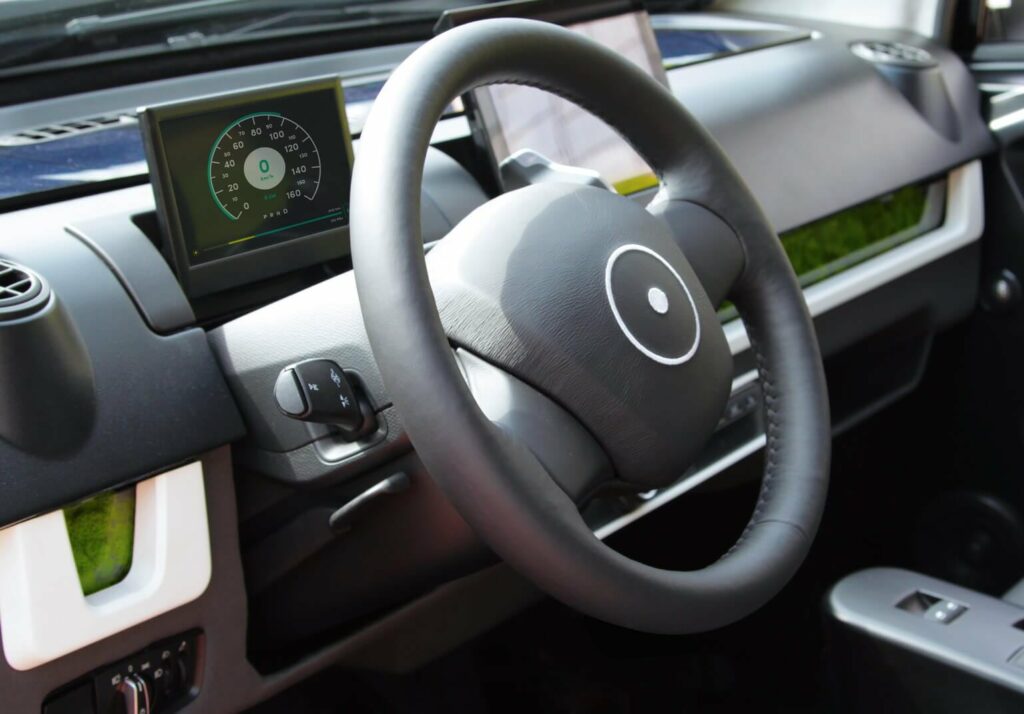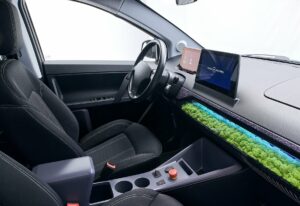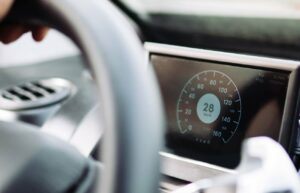Sono Sion
The Sono Sion is an upcoming all-electric car that is being developed by the German start-up company, Sono Motors. It is a compact electric car that is designed to be affordable and practical, with a range of features that make it a good option for daily use and longer trips.

The Sion is powered by a 54 kWh battery pack and an electric motor that delivers up to 270 Nm of torque. It has a range of up to 260 kilometers on a single charge and can be charged using a standard household outlet or a fast charger.
One of the unique features of the Sion is that it is covered in solar panels, which can generate up to 150 miles of additional range per week in optimal conditions. It also includes a range of other features, such as an air purification system, a large touchscreen infotainment system, and a range of safety features.

Overall, the Sono Sion is a practical and efficient electric car that is designed to be affordable and sustainable. It is a good option for buyers who are looking for an electric car that is practical, easy to use, and eco-friendly. However, the Sion is still in development, and it is unclear when it will be available for purchase.
| Performance | |
| Acceleration 0 – 100 km/h | 9.0 sec |
| Top Speed | 140 km/h |
| Electric Range | 260 km |
| Total Power | 120 kW (163 PS) |
| Total Torque | 270 Nm |
| Drive | Front |
| Battery and Charging | |
| Battery Capacity | 54.0 kWh |
| Battery Useable | 47.0 kWh |
| Europe | |
| Charge Port | Type 2 |
| Port Location | Front – Middle |
| Charge Power | 11 kW AC |
| Charge Time (0->260 km) | 5h15m |
| Charge Speed | 52 km/h |
| Fastcharge Port | CCS |
| FC Port Location | Front – Middle |
| Fastcharge Power (max) | 75 kW DC |
| Fastcharge Time (26->208 km) | 35 min |
| Fastcharge Speed | 310 km/h |
| Energy Consumption | |
| EVDB Real Range | |
| Range | 260 km |
| Vehicle Consumption | 181 Wh/km |
| CO2 Emissions | 0 g/km |
| Vehicle Fuel Equivalent | 2.0 l/100km |
| WLTP Ratings | |
| Range | 305 km |
| Rated Consumption | 166 Wh/km |
| Vehicle Consumption | 154 Wh/km |
| CO2 Emissions | 0 g/km |
| Rated Fuel Equivalent | 1.9 l/100km |
| Vehicle Fuel Equivalent | 1.7 l/100km |
|
Rated = official figures as published by manufacturer. Rated consumption and fuel equivalency figures include charging losses.
|
|
|
Vehicle = calculated battery energy consumption used by the vehicle for propulsion and on-board systems.
|
|
| Real Energy Consumption Estimation between 121 – 254 Wh/km | |
| City – Cold Weather * | 181 Wh/km |
| Highway – Cold Weather * | 254 Wh/km |
| Combined – Cold Weather * | 214 Wh/km |
| City – Mild Weather * | 121 Wh/km |
| Highway – Mild Weather * | 200 Wh/km |
| Combined – Mild Weather * | 157 Wh/km |
| Energy use for each trip will vary considerably depending on the driver and the conditions. Therefore, we have provided a range of estimates which can be useful in developing an understanding of the potential benefits of this technology. | |
| Dimensions and Weight | |
| Length | 4470 mm |
| Width | 1830 mm |
| Width with mirrors | 2080 mm |
| Height | 1660 mm |
| Wheelbase | 2830 mm |
| Weight Unladen (EU) | 1730 kg |
| Gross Vehicle Weight (GVWR) | 2180 kg |
| Max. Payload | No Data |
| Cargo Volume | 650 L |
| Cargo Volume Max | 1250 L |
| Cargo Volume Frunk | 0 L |
| Roof Load | No Data |
| Tow Hitch Possible | Yes |
| Towing Weight Unbraked | No Data |
| Towing Weight Braked | 750 kg |
| Vertical Load Max | No Data |
| Miscellaneous | |
| Seats | 5 people |
| Isofix | Yes, 2 seats |
| Turning Circle | 11 m |
| Platform | No Data |
| Car Body | Hatchback |
| Segment | C – Medium |
| Roof Rails | No Data |
| EV Dedicated Platform | No Data |
Home and Destination Charging (0 -> 100%)
A public charging station is required to use the highest possible charging rate. The EVSE/charging station’s charging capacity affects how long it takes to fully charge the battery. The table below shows all possible options for fully charging the Sono Sion.
In Europe, plugging an electric car into an outlet is often as easy as plugging it into a household outlet, but there are differences from country to country. The table below shows the different ways to charge the Sono Sion, but in some countries some chargers may not be available.
Type 2 ( IEC 62196)

| Charging Point | Max. Power | Power | Time | Rate |
| Wall Plug (2.3 kW) | 230V / 1x10A | 2.3 kW | 24h15m | 11 km/h |
| 1-phase 16A (3.7 kW) | 230V / 1x16A | 3.7 kW | 15 hours | 17 km/h |
| 1-phase 32A (7.4 kW) | 230V / 1x32A | 7.4 kW | 7h30m | 35 km/h |
| 3-phase 16A (11 kW) | 400V / 3x16A | 11 kW | 5h15m | 50 km/h |
| 3-phase 32A (22 kW) | 400V / 3x16A | 11 kW | 5h15m | 50 km/h |
Fast Charging (10 -> 80%)
If you want to enjoy driving an electric car, one of the most important features to consider is the number of miles per hour the car can travel while charged. This is called the “range” of the car. All electric cars have a certain range, even if they are 100% charged. This is because they do not have an internal combustion engine to lean on if you need to drive a long distance.
Max. Power: The maximum power provided by the charging point
Avg. Power: The average power provided by the charging point during a session of 10% to 80%.
Time: the time it takes to charge from 10% to 80%
Speed: the average charging rate during the session of 10% to 80%
Combined Charging System (CCS Combo 2)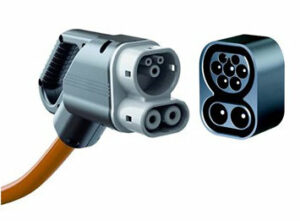
| Charging Point | Max. Power | Avg. Power | Time | Rate |
| CCS (50 kW DC) | 50 kW | 40 kW | 52 min | 210 km/h |
| CCS (100 kW DC) | 75 kW | 60 kW | 35 min | 310 km/h |
| CCS (150 kW DC) | 75 kW | 60 kW | 35 min | 310 km/h |
| Brand | Sono |
| Model | Sion |
| Body Style | Hatchback |
| Car Engine | electric |
| Motor power | 120 |
| Maximum Torque, Nm | 270 |
| Battery Energy, kWh | 54.0 |
| Power reserve (NEDC/EPA/WLTP), km | - / - / 260 |
| Level Charging (230/400/DC), hours | - / 5.15 / 0.35 |
| Electrical Acceleration, 0-100 km/h (0-62.1 mph) in sec | 9.0 |
| Top Speed, km/h | 140 |



